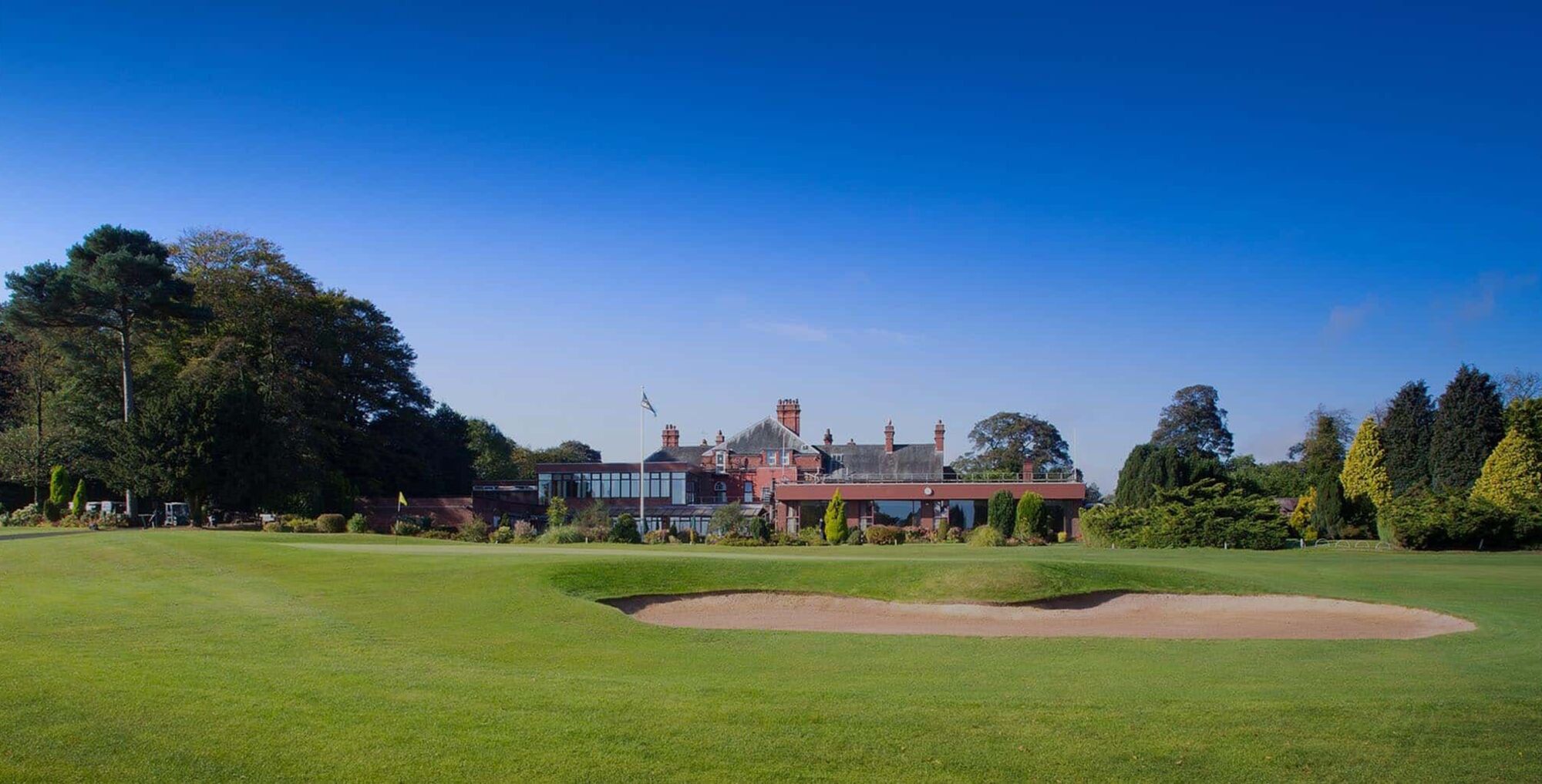Model Local Rules
Out of Bounds (Rule 18.2)
- Beyond the boundary of the course, any fence, on or beyond any white line or white stakes defining the boundary of the course.
- In or beyond the ditch running down the right-hand side of the 5th Blue
- On, in or beyond the gardens and practise putting green adjoining the club house
- The car park and cottage gardens to the left of the 1st Yellow
Water Hazards
All streams, ponds and ditches are penalty areas, whether marked or not and those unmarked are to be treated as yellow penalty areas.
Dropping Zones
If a ball is in the following penalty areas: Penalty area at the rear of 2nd blue green, the left-hand side pond of 7th blue green and the ditch at the rear of 7th blue green, the stream at the rear of 1st red green, stream to the right of the 8th red green, ditch rear of 2nd yellow green and the ditch rear of 4th yellow green. Including when it is known or virtually certain that a ball that has not been found came to rest in the penalty area, the player has these relief options, each for one penalty stroke:
Take relief under Rule 17.1, or As an extra option, drop the original ball or another ball in the dropping zone which is marked by a boxed white line marked Drop Zone. The dropping zone is a relief area under Rule 14.3.
Relief from Aeration Holes
If a player’s ball lies in or touches an aeration hole in the general area or on the putting green, relief may be taken under Rule 16.1.
Protection of Young Trees
The young trees identified by being staked or less than one club length in height are no play zones. If a player’s ball lies anywhere on the course other than in a penalty area and it lies on or touches such a tree or such a tree interferes with the player’s stance or area of intended swing, the player must take relief under Rule 16.1f.
Abnormal Course Conditions (including Immovable Obstructions) (Rule 16)
- Abnormal course conditions are defined by any area encircled by a blue line or blue stakes are to be treated as a no play zone.
- Unmarked surface drainage channels, flower beds and damage caused by green keeping machinery i.e., ruts, not shallow indentations these to be treated as abnormal course conditions
- Golf ball washers, Rubbish bins, hole signage boards and benches are immovable instructions.
Integral Objects
All sheds, toilets, dams and bridges are integral parts of the course, not immovable instructions.
Relief for Embedded Ball in Bunker face (Rule 16.3)
Free relief is allowed when a ball is embedded in stacked turf/synthetic turf faces or soil faces of all bunkers. Relief is within one club-length (but not nearer the hole) from the spot right behind where the ball was embedded. Depending on the location of your ball, you may have to take relief in the bunker.
If a ball is embedded within a bunker you are unable to take free relief.
Immovable Obstructions Close to Putting Greens
Immovable obstructions close to putting green (e.g. sprinkler heads): In addition to the types of interference described in Rule 16.1a, when a ball lies in the general area, interference also exists if an immovable obstruction is: on the player’s line of play, is within two club-lengths of the putting green, and is within two club-lengths of the ball. The player may take relief under Rule 16.1b. (Exception – There is no relief under this Local Rule if the player chooses a line of play that is clearly unreasonable.
All Roads and Paths Treated as Obstructions
All roads and paths on the course which are artificially surfaced, or which are clearly edged, are treated as immovable obstructions from which free relief is allowed under Rule 16.1.
Thunderstorm Response
If it is deemed that a storm is approaching the estate and will pass over head, the CM / Pro Shop or the Marshall shall sound a klaxon to alert all golfers and green keepers to evacuate the course and seek shelter in the clubhouse.
If there is a risk of lightning, play should be discontinued, and golfers should proceed immediately to the clubhouse. Shelter should not be sought under trees or in the vicinity of woodland.
During competitions, if there is a lightning risk, play will be suspended, and players must leave the course. Where play is automatically suspended on the sound of the klaxon, a player may not override the policy decision to evacuate the course.
Although the Club will take every precaution to ensure the safety of players during a thunderstorm, it is a player’s own responsibility to discontinue play when in his/her opinion lightning is a threat.
It is not always possible to monitor conditions on the entire course and players have a duty of care to themselves. They should therefore familiarise themselves with both the Club policy and the Rules of Golf.
Discontinuing Play - Rule 6-8 as stated in the R&A Rules of Golf will apply to all competitions and matches where there is a risk of lightning. The rules of golf are straightforward when lightning is a risk. Rule 6-8 makes it quite clear that a player is entitled to discontinue play if he or she believes there is danger from lightning. Although bad weather is not a good reason for discontinuing play, bad weather accompanied by lightning, or the very real risk of lightning, most certainly is.
Common sense dictates that play in these circumstances must be discontinued in the interests of safety. Even if the klaxon is not sounded and the player honestly believes that there is a real risk of danger from lightning, then he or she is entitled to cease play under the provisions of Rule 6-8.
Resumption of Play – Where play has been suspended due to lightning, play must be resumed where it was discontinued, even if resumption occurs on a subsequent day. (see Rule 6-8 R&A Rules of Golf.) When the danger has passed, 3 short blasts of the klaxon will indicate that it is safe to return to the course.
Distance Markers
Indicate measurements in yards to the centre of the green
Priority on the course:
Keep up with the group in front of you, if you lose a hole call the group behind through
Single players have equal status
Give preference to those playing in club competitions
Model local winter rules when in operation (in addition to the above)
Preferred Lies
When a player's ball lies in a part of the general area cut to fairway height or less, the player may take free relief once by lift, clean and placing the original ball and playing it from this relief area:
Reference Point: Spot of the original ball.
Size of Relief Area Measured from Reference Point: 6 inches from the reference point, but with these limits:
Limits on Location of Relief Area: Must not be nearer the hole than the reference point, and must be in the general area.
In proceeding under this Local Rule, the player must choose a spot to place the ball and use the procedures for replacing a ball under Rules 14.2b(2) and 14.2e.
September 2023










